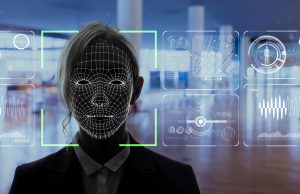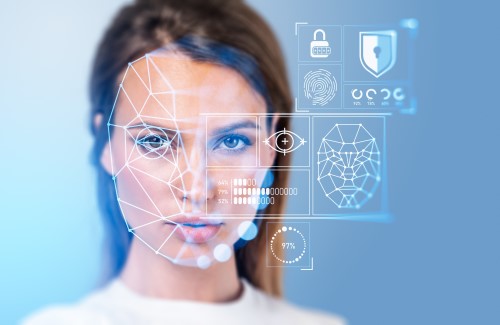
In the digital era, the concept of identity extends beyond physical attributes to encompass an array of computer-identifiable characteristics. This digital identity plays a pivotal role in access management systems and cybersecurity frameworks. Let’s delve into the intricacies of digital identity, its implications for privacy, and its foundational role in shaping access control and authentication mechanisms.
What Constitutes a Digital Identity?

Digital identity encompasses the recorded, unique characteristics that allow a computer system to identify an external entity, which could be a person, organization, software program, or another computer. This identification is based on specific attributes such as knowledge of passwords, voice frequencies, IP addresses, or media access control (MAC) addresses. For instance, individuals may be recognized through personal identifiers like password or biometric data, while devices might be identified via network addresses.
Entities with Digital Identities
Virtually every individual interacting with the digital world has some form of digital identity, from email and social media profiles to online shopping histories and beyond. Likewise, digital identities extend to computers, mobile devices, and even organizational identities, all of which are essential for enabling secure interactions in the digital scape.
The Role of Digital Identity in Access Control
Access control, a fundamental aspect of information security, relies heavily on digital identity to dictate what information a user can access or manipulate. It employs digital identities to authenticate and authorize individuals, thereby ensuring that only the right people can access specific data or systems.
Authentication and Its Importance
Authentication serves as a crucial first step in the process of access control by ensuring that access to systems, networks, or information is granted only to those who are verified to who they claim they are. It does this by requiring one or more forms of evidence, or “factors,” proving an individual’s identity. These factors can be categorized into three main types: knowledge factors, possession factors, and inherent factors. The combination and use of these factors in systems are fundamental to enhancing security and protecting digital identities.
Knowledge Factors
Knowledge factors represent something the user knows and can provide as proof of identity. This could be a password, which is a secret set of characters known only to the user and the system, or answers to security questions that would presumably be known only by the actual user. Security questions might include personal information presumed not to be widely known, like the name of a first pet or the user’s mother’s maiden name. The critical assumption here is that this knowledge is exclusive to the user, making it a useful tool for verifying identity.
Possession Factors
Possession factors are based on something the user physically has, providing a second layer of authentication beyond what the user knows. This could be a mobile phone that can receive a uniquely generated code via text message or an app, or it could be a hardware token—a small physical device often carried on a keychain, that generates a new code at fixed intervals. Because these devices are in the user’s possession, the theory is that only the rightful user could have the device and, therefore, the code or token it produces, adding an additional layer of security.
Inherent Factors
Inherent factors refer to characteristics inherent to the individual user—something the user is. This category includes biometric verification methods like fingerprint scanning, facial recognition, and retina or iris scans. These methods are based on unique physical characteristics of the user that are extremely difficult to replicate or steal, making them strong indicators of a person’s identity.
Multi-Factor Authentication (MFA)
When these types of authentication factors are used in combination, the security of digital identities is significantly enhanced. This approach is known as Multi-Factor Authentication (MFA). MFA requires the user to provide evidence from two or more of the authentication categories (knowledge, possession, inherent) to verify their identity. By employing MFA, the risk of unauthorized access is drastically reduced because an attacker would need to compromise more than one type of evidence to gain access, which is significantly more difficult than compromising a single factor.
The Importance of Authentication
The importance of authentication in the framework of digital security cannot be overstated. It’s the bedrock upon which access control is established, ensuring that only verified individuals can access sensitive data, systems, or networks. In an age where digital identities can be targeted for theft, fraud, and unauthorized access, robust authentication methods serve as essential defenses in protecting not just individual users, but also the organizations and infrastructures they belong to. As digital threats evolve, so too must the methods of authentication, continuously adapting to safeguard digital identities against potential compromises.
Digital Identity and Privacy

The storage and processing of personal attributes essential for digital identities raise significant privacy concerns. Mishandling or unauthorized access to such data can lead to privacy breaches, highlighting the need for stringent data protection measures.
The Essence of Identity and Access Management (IAM)
IAM systems play a crucial role in managing and safeguarding digital identities and their associated access privileges. By ensuring that only authenticated and authorized users can access sensitive information or systems, IAM frameworks are instrumental in preventing data breaches and cyberattacks.
The Future of Digital Identity with Zero Trust Security
Platforms like Cloudflare Zero Trust embody the evolution of digital identity security, adopting an identity-aware, Zero Trust approach. This methodology ensures stringent verification of all users before granting access to resources, aligning with modern cybersecurity best practices.
Final Thoughts
Digital identity is a comprehensive and nuanced concept that lies at the heart of modern cybersecurity and access management strategies. As digital interactions continue to evolve, the importance of securely managing digital identities cannot be overstated. By embracing robust authentication practices and advancing technologies like IAM and Zero Trust security, organizations can safeguard their digital assets while ensuring a secure and efficient user experience.










